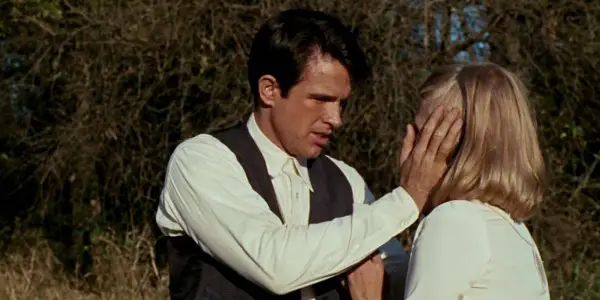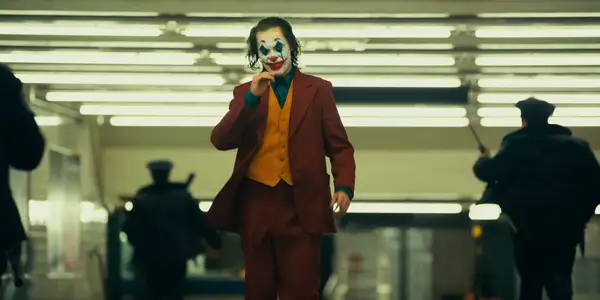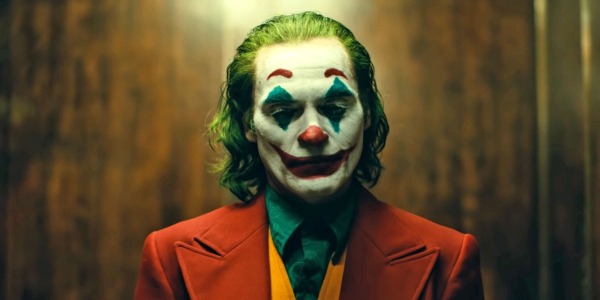The Sting Of Death: JOKER And BONNIE & CLYDE

I used to work in politics but film has always…
There is a prescient section in Pauline Kael’s biography, A Life in the Dark, that discusses the 1967 release of Arthur Penn’s Bonnie and Clyde. It compares Kael’s positive reaction to the film with other critics’ denunciation, particularly of its depiction of violence. Until this time Kael was disillusioned by the state of American cinema, having recently panned The Sound of Music and Doctor Zhivago to the chagrin of her editors. Bonnie and Clyde, however, reignited her optimism.
Kael appreciated Bonnie and Clyde’s contemporary feeling because it “divides audiences, as The Manchurian Candidate did, and it is being jumped on almost as hard.” The book’s author, Brian Kellow, notes that Bonnie and Clyde changed American filmmaking with its honest and direct portrayal of violence. It’s a violence that, Kael says, “put the sting back into death.” When I read that quote, I immediately stopped what I was doing and began typing this very piece, because I was reminded of another film that has ignited similar public discourse.

I am not suggesting that Todd Philips’ Joker is being subjected to the same criticism Bonnie and Clyde was, criticism to which Kael took offense, and I am glad it isn’t. At the same time, though, there is a lot to be said about a film that has caused so much controversy and, frankly, tiresome discourse about its merits. Philips has gone on multiple public defenses of the film as well as attacks on the cultural conditions that he feels pushed him into making the film he did.
Similarly, at the time of Bonnie and Clyde’s release Arthur Penn responded to critics, saying that most violence in films isn’t violent enough, and a film that doesn’t show the true horrors of violence, the type that Bonnie and Clyde inflicted, actually glorifies it. I tend to agree with him here.
Moralizing Violence
The violence in Bonnie and Clyde was, according to Kael, there to “rub our noses in it, to make us pay our dues for laughing.” Was the violence in Joker there for the same reason? A more intelligent movie would have challenged us to reflect on why Arthur Fleck became the figure we know as the Joker today. I would argue Joker isn’t asking us to really confront anything about ourselves. Arthur Fleck wasn’t railing against Gotham’s elite before the murder of the three Wayne Industries employees in the way many of his admirers believed he was. In fact, he is openly apolitical. He murdered them in cold blood because they were mean to him. If anything, the film makes fun of Joker’s ravenous followers for their devotion to a figure who doesn’t believe in their cause.

Kael makes extensive comparisons between Bonnie and Clyde and Fritz Lang’s You Only Live Once, a film inspired by the same figures. In her comparisons she notes that Lang’s work specifically frames its hero, Eddie, as mistreated by society. Indeed, her read of the film is that it was so successful during its release because it tapped into the widely held acceptance by most Americans that “society” was against them. Eddie’s plan to escape jail would require him to actually commit the crime he was wrongfully accused of, which would only prove society’s case against him.
If that sentiment sounds familiar, it is. Joker absolutely reeks of this kind of moralization, in that a man clearly suffering from mental illness is ostracized by the world because it sees and thinks of him in only that way; but in reality, as the film would have you believe, he is a kind, caring, gentle soul capable of empathy and love. Kael’s appreciation for Bonnie and Clyde stems from its complete lack of moral manipulation. Bonnie and Clyde are criminals because they revel in their criminality and all the audience is asked to do is watch it all unfold.
Historical Revision
Part of the backlash to Bonnie and Clyde, says Kael, was due to the fact that it was presented to audiences as a fresh take on the characters and their story. She thought, admittedly based on “psychological suppositions,” that people were shaken by this new take because it was so far afield of previous iterations, including You Only Live Once.
Joker is a fresh take on its titular character because for the first time it gives him an origin story. The tricky part – and this is something you can feel while watching the movie – is that it is hard to concretely establish a rational history for a character whose actions are not based on any rationale. The whole point of the Joker is that he is unhinged, and his actions are based less on personal motive than a desire to wreak general havoc for havoc’s sake. By giving the Joker a backstory, we are being asked to feel the sting of the death he causes for the first time, because it is all from his perspective.
It only took a split second for the kind and caring Arthur Fleck to turn into the Joker. What Kael read as the audience’s negative reaction to violence springing suddenly from innocence in Bonnie and Clyde is also at work in Joker. We are already being asked to accept so much about a character whose only other depictions in popular culture are of unreasoned violence and anarchy. To start off at a square one so diametrically opposed to our current understanding, the reasons being as they are, is to create an almost untenable journey to the film’s unhinged conclusion.

The Sting of Death
The sting of death in Bonnie and Clyde is thanks to a lot of creative choices. The film creates a historical distance between itself and the audience; it presents an off-kilter version of the depression era that audiences in the late 60s already regarded as a bygone era. In doing so it renders the actions of its characters as slightly comical, too. That makes the depiction of the violence they inflict feel all the more shocking, because it was presented in stark reality, blood, holes and all.
On the other hand, 1980s Gotham City is presented as a city in decline, done so with all the nuance of a stick figure drawing; but it is presented as gritty realism. Fleck is mercilessly picked on by coworkers and strangers alike to an unbelievable degree, the medical professionals in his life are distant and inattentive to his needs, and the city has cut the funding that pays for his medication. All this is to say that the audience is expected to accept the violence that springs from his innocent condition as shocking, yes, but also indicative of the forces acting against him. The sting of death in the subway car where the Joker is ostensibly born is painful, but to the audience it is supposed to all at once feel like his final cathartic act of rebellion against the system as well as an indictment of that system.
The violence in Bonnie and Clyde drew some of the same ire that Joker’s violence has since it premiered at the Venice Film Festival. Kael resented the fact that some of her contemporaries believed the film’s violence would prompt imitation when she believed that art should not be an example for society of what to do or not do. While she found the violence in a film like The Dirty Dozen to be personally offensive, she nevertheless defended its right to exist and did not subscribe to the dogma that life imitates art.
Philips, in a way, makes it very difficult to decipher what Joker does and doesn’t want us to do. It starts with the very fact that we are made to sympathize with a character that decades of pop culture before this film has told us is fundamentally unrelatable. And Philips’ own characterization of the Joker doesn’t help because he is more an amalgamation of tics and symptoms with a tragic backstory than a full-fledged character. Instead of using the film’s action as the rationale for Arthur Fleck’s development, his choices are influenced by events we are never shown, the tragic backstory unceremoniously dumped on the audience late in the film. Telling a moral story, be it good or bad, through a character like this is nearly impossible. And while it may seem like a valiant effort to try and do so, it leaves me thinking everyone’s time could have been better spent doing other things.
But I don’t believe Joker accomplishes what Kael recognized in the controversy over Bonnie and Clyde, which is that instead of violence serving as an inspiration it should serve as a warning. Kael thought the tragi-comic tone of Bonnie and Clyde was an effective warning because it lulled the audience into hoping for similarly tragi-comic violence, while shaming it for doing so by, instead, showing it in vivid, bloody detail.

Joker doesn’t warn its audience about anything, because it says almost nothing. It lulls the audience less into wanting more violence, than into celebrating the violence the Joker does inflict. The brutal murder of the three men on the subway was a horrific example of manipulated catharsis, brought on by the incessant pile up of misfortune on Arthur. It stands to reason that the violence the Joker inflicts could be, or at least feel, righteous if the film sets up its character’s conditions effectively. After the subway, though, his violent outbursts are less and less earned and much more shocking, yet the audience is asked to embrace them despite the vague socio-political messages to which they are attached.
All this is to say that the sting of death Kael introduced in her critique of Bonnie and Clyde can never be fully realized in a story with no workable context. Death in Joker feels more like a slap to the face than a sting to the heart; the physicality is there, but the ramifications are gone in an instant. Bonnie and Clyde, as Kael observes, are both horrified and destroyed by the violence they inflict. Joker’s violence is a steppingstone to his public hero status against the ruling class that has destroyed Gotham. He is, if not excited, neutral to the violence he causes and thrilled by the attention it brings.
What to make of all this?
Kael said in her Bonnie and Clyde review that “the fact that it is generally only good movies that that provoke attacks by many people suggests that the innocuousness of most of our movies is accepted with such complacence that when an American movie reaches people, when it makes them react, some of them think there must be something the matter with it.” It is interesting to me that there is a possibility that the great Pauline Kael might have liked Joker. That isn’t to suggest that she shouldn’t like it, or that I think she and I are equals in any way. But the small chance that could be the case, though, is fascinating.
I don’t think Joker is good; its own painful, self-seriousness actually makes it bad. It is bad not because that self-seriousness is encouraging its audience do perform violent acts on the people or institutions it feels have wronged it, but because that self-seriousness disguises a film that, unlike Bonnie and Clyde, doesn’t know what it’s about.
What do you think about the way we are supposed to feel about death in Joker? Let me know in the comments below!
Does content like this matter to you?
Become a Member and support film journalism. Unlock access to all of Film Inquiry`s great articles. Join a community of like-minded readers who are passionate about cinema - get access to our private members Network, give back to independent filmmakers, and more.
I used to work in politics but film has always called to me. Now I'm putting my love of the art form to use! I love social thrillers, coming-of-age tearjerkers, and pitch black comedies. The Coen Brothers, Olivier Assayas, Ingmar Bergman, Kelly Reichardt, and Andrew Haigh speak to me on a spiritual level. Enjoy!













